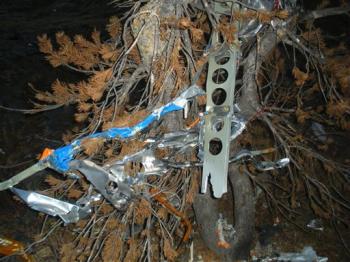The US National Transportation Safety Board has determined that the most likely cause of the aircraft crash that killed adventurer Steve Fossett on 3 September was “an inadvertent encounter with downdrafts that exceeded the climb capability of the airplane.”

Fossett disappeared while on a pleasure flight in a Bellanca 8KCAB-180 Super Decathlon from hotel magnate Barron Hilton’s Flying M Ranch in Nevada that morning.
The wreckage of the aircraft near Mammoth Lakes, California, was discovered more than a year later after hikers found several items, including Fossett’s pilots license, in remote mountainous terrain at an elevation of 10,000ft (3,048m).
A review of radar data after the find revealed that Fossett had been tracked by radar to within 1mi (0.87nm) of the accident site, but the track had been ruled out by searchers due to a witness report of seeing the single-engine aerobatic aircraft in different location at the suspected time of the crash.
 ©NTSB
©NTSB
According to the NTSB, the remnants of the aircraft (some pictured above) indicated that Fossett had executed a 180-degree turn after radar contact was lost, and that the aircraft had impacted the ground traveling at a high rate of speed in a right wing low, near-level pitch attitude.
Weather reports at the time indicated that downdrafts of at least 400fpm “probably” occurred at the time and in the area of the accident, exceeding the aircraft’s climb capability of 300fpm at its density altitude of 13,000ft.
Implied but not specifically stated in the report is that Fossett attempted to reverse course once he encountered the downward flow of air.
In addition to the downdrafts, the NTSB says high density altitude and mountainous terrain contributed to the accident.
Source: FlightGlobal.com
















